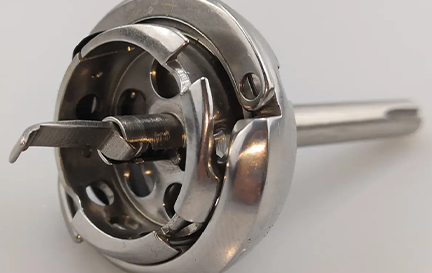Understanding the Distinctions Between Sergers and Overlock Machines in Sewing
The Difference Between a Serger and an Overlock Machine
When it comes to sewing, many enthusiasts encounter the terms serger and overlock machine. While these machines often seem interchangeable, understanding the difference between them can greatly enhance your sewing experience and help you make informed decisions about your sewing projects.
Firstly, let's clarify what each machine does. The term overlock machine refers to a type of sewing machine that trims the edge of the fabric and encloses it with stitches to prevent fraying. Overlock stitches are typically formed by using multiple threads, which wrap around the edge of the fabric, providing a clean finish. This makes overlock machines particularly valuable for knit fabrics, which tend to stretch. Overlock machines can be single- or multi-threaded, with more advanced models featuring up to 8 threads for intricate stitch designs.
On the other hand, serger is often used interchangeably with overlock machine, yet it specifically refers to a machine that performs overlocking operations while also offering additional features. Serger machines can perform basic overlock stitches, as well as other functions such as flatlocking and rolled hems. This versatility makes sergers essential for various sewing tasks, from finishing seams to creating decorative edges.
One of the key differences lies in functionality. While all sergers are overlock machines, not all overlock machines are sergers. Most sergers include differential feed, a feature that allows for the adjustment of fabric feeding during sewing, which is crucial when working with stretchy or delicate fabrics. This feature helps in preventing puckering and ensures evenly sewn seams.
what is the difference between a serger and overlock machine

Another significant difference is the threading complexity. Many entry-level overlock machines are designed for simplicity, making them suitable for beginners. Meanwhile, sergers often have more advanced threading systems that can initially be daunting for new users. However, once mastered, the capabilities of a serger allow for a more professional finish.
In terms of the types of stitches available, sergers usually have a wider variety compared to standard overlock machines. This includes the ability to create specific stitches for different types of fabrics. A serger can perform various types of seams, finish edges, and even create decorative stitches, which means it can be a more versatile tool in a sewer's arsenal.
Additionally, sergers often include additional features like built-in rolled hem capabilities, color-coded threading guides, and adjustable stitch lengths and widths. These features can significantly enhance the sewing experience, allowing for greater creativity and precision.
In conclusion, while both sergers and overlock machines are invaluable tools in the world of sewing, they cater to different needs. A serger offers a broader range of stitch types and functionalities, making it ideal for advanced sewing projects. On the other hand, a basic overlock machine can be an excellent choice for beginners looking for a straightforward way to finish edges and sew seams. Understanding these differences can help sewists select the right machine for their specific projects, ensuring a smooth and enjoyable sewing journey. Whether you choose a serger or an overlock machine, both will undoubtedly enhance your sewing repertoire and lead to beautifully finished garments.
-
Zigzag Sewing MachineNewsMay.12,2025
-
Single Needle Sewing MachineNewsMay.12,2025
-
Overlock Sewing Machine PriceNewsMay.12,2025
-
Heavy Duty Industrial Sewing MachineNewsMay.12,2025
-
FIBC Sewing MachineNewsMay.12,2025
-
Cylinder Bed Sewing MachineNewsMay.12,2025
-
Revolutionizing Sewing with CNC TechnologyNewsMar.28,2025





























